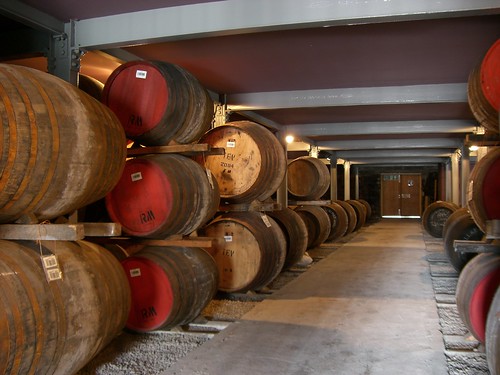
One of the best parts of the Macallan tour was the special barrel/art of coopering section they had above the warehouse. In it, they explained the difference between American oak and French oak, barrel construction, and other aspects of coopering.
Did you know that a barrel has a standard volume of 36 Imperial gallons? (43 US gallons)
I didn’t, I figured barrel was a general term for a container of that general size and shape. Well, to make things more interesting, there are actually many varying sizes of “barrels,” some of which have very funny names (all gallons are Imperial gallons):
- Firkin – 9 gallons
- Kilderkin – 18 gallons
- Barrel – 36 gallons
- Hogshead – 54 gallons
- Butt – 108 gallons
- Tun – 216 gallons
Firkin – It’s an old English term derived from a Middle Dutch word vierdekijn, which means fourth. It’s appropriate because a firkin is a fourth of a barrel in volume.
Kilderkin – Again an old English term derived from Dutch but it doesn’t mean half, it just means small cask, but it is a half barrel.
Hogshead – I wasn’t able to find the origin of the term but it was standardized as 54 gallons by an act of Parliament in 1423.
Butt – This size in wine is called a pipe, so when The Balvenie Portwood Finish 21 states it was finished in Port pipes, it means barrels of this size.
Tun – It sounds like ton because it shares the same origin though the latter refers only to mass/weight.
Finally, what’s the difference between Imperial gallons and US gallons? The US measurement comes from the English measurements of the Middle Ages, it wasn’t until 1824 that the English derived the Imperial system, which was after American independence. An Imperial gallon works out to be a little over 1.2 US gallons (technically, ~1.20094992550 US gallons).
It’s always interesting to learn a little bit of trivia!
(Photo: schlaeger)
